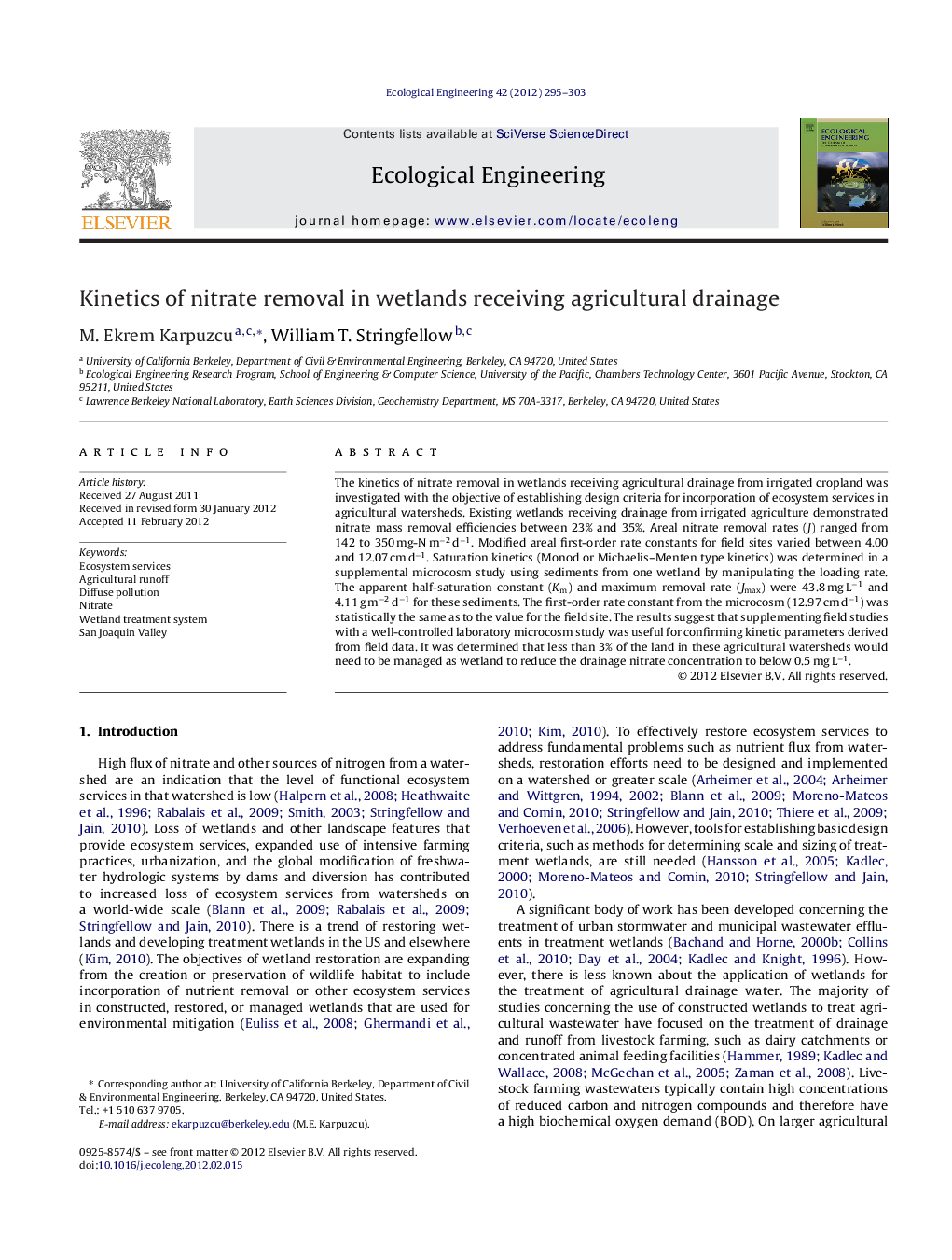| Article ID | Journal | Published Year | Pages | File Type |
|---|---|---|---|---|
| 6302813 | Ecological Engineering | 2012 | 9 Pages |
The kinetics of nitrate removal in wetlands receiving agricultural drainage from irrigated cropland was investigated with the objective of establishing design criteria for incorporation of ecosystem services in agricultural watersheds. Existing wetlands receiving drainage from irrigated agriculture demonstrated nitrate mass removal efficiencies between 23% and 35%. Areal nitrate removal rates (J) ranged from 142 to 350 mg-N mâ2 dâ1. Modified areal first-order rate constants for field sites varied between 4.00 and 12.07 cm dâ1. Saturation kinetics (Monod or Michaelis-Menten type kinetics) was determined in a supplemental microcosm study using sediments from one wetland by manipulating the loading rate. The apparent half-saturation constant (Km) and maximum removal rate (Jmax) were 43.8 mg Lâ1 and 4.11 g mâ2 dâ1 for these sediments. The first-order rate constant from the microcosm (12.97 cm dâ1) was statistically the same as to the value for the field site. The results suggest that supplementing field studies with a well-controlled laboratory microcosm study was useful for confirming kinetic parameters derived from field data. It was determined that less than 3% of the land in these agricultural watersheds would need to be managed as wetland to reduce the drainage nitrate concentration to below 0.5 mg Lâ1.
